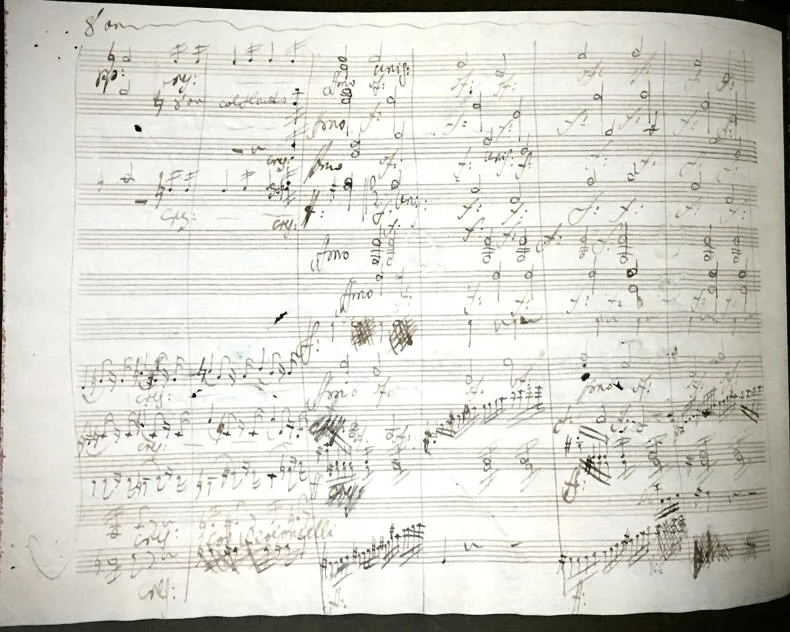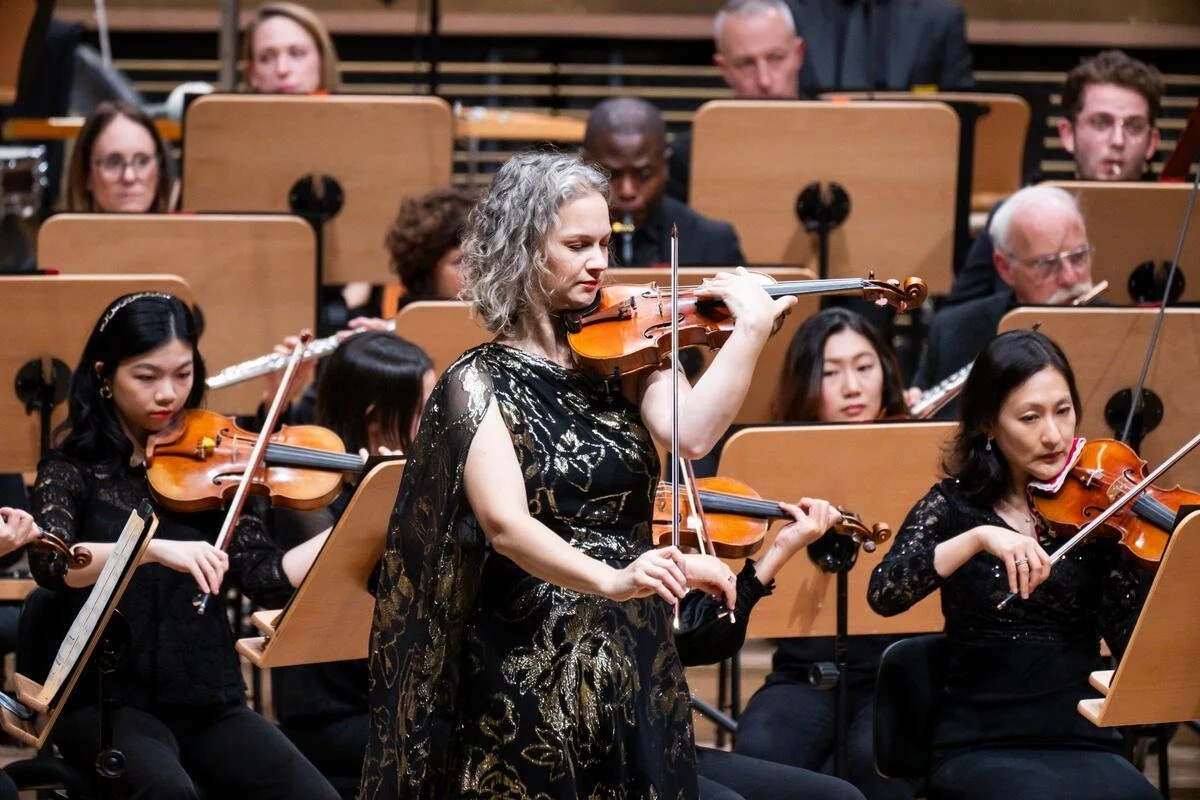REVIEW: New York Philharmonic Makes It About the Music
Above photo by Chris Lee.
September 21, 2024
Eyes and ears are focused on the New York Philharmonic this week. A new collective bargaining agreement with the American Federation of Musicians has been reached, promising significant pay increases and important cultural changes. At the same time, future music director Gustavo Dudamel doesn’t take the helm until 2026, and the role of CEO is currently in limbo.
But New York City’s lodestar orchestra is poised to chart onward, making it about the music. Ken-David Masur (son of former Philharmonic maestro Kurt Masur) made his New York Philharmonic subscription debut conducting an evening of repertoire ‘curated’ by the Philharmonic musicians. Orchestras should dabble in the tastes of their instrumentalists more often; the audience, exposed to literature that stimulates the artists themselves, will discover new lanes to explore, and perhaps new favorites, too.
This varied program coalesced around the theme of seeing things in a new light, of transformation. Augusta Read Thomas’s Bebop Kaleidoscope, a New York Philharmonic Commission receiving its World Premiere, seized the audience’s attention out-of-the-gate. Subtitled Homage to Duke Ellington, the composer wrote of treating the orchestra as “a virtuosic kaleidoscope” in “five ever-changing bebop dances which are played without pause.”
Big-band-style stacked chords jolted and flashed with a sparkle, heavily punctuated with metallic percussion. Gradually the Ellington-ian harmonies splintered into melodic hooks nervously jousting for prominence, until the dark specter of conflict brought a stop-and-go battle of wits. This veritable concerto grosso for the entire orchestra — the percussion section frequently spurred in furious dialogue with disparate groupings of winds and strings — built to a quick not-quite-resolution and ended matter-of-factly.
Augusta Read Thomas, Ken-David Masur, and musicians of the New York Philharmonic. Photo by Chris Lee.
It was a bracing start that opened the door to a delectable deep cut — Duke Ellington’s 1950 composition Harlem. Originally penned for Ellington’s band and titled A Tone Parallel to Harlem (here presented in expanded orchestration by Ellington’s collaborator Luther Henderson), the work depicts "a Sunday stroll through the neighborhood” of Harlem, infused with the sounds and emotions of the historic community. The brass section tore vociferously into the juicy, bluesy riffs and stratospheric wails, plunger mutes and all. Principal clarinetist Anthony McGill strutted his versatility with a debonair solo cadenza in this ambitious work that picks up where Gershwin left off, bridging the chasm between classical and jazz, proving that the NY Phil can metamorphose on the flip of a dime — from courtly Baroque dance band to Stan Kenton-like wall of sound.
Musicians always return to J. S. Bach, so no surprise that an artist-curated playlist found reason to intercede Thomas’s contemporary tribute and Ellington’s midcentury tone poem with a visit to the Baroque master. A New York tie-in as well — Gustav Mahler arranged this suite for the Philharmonic during his tenure as music director in 1909, leading performances of it many times (on the orchestra’s first tour) playing a prepared piano, tacks affixed to the hammers to simulate the sound of a cembalo. An actual harpsichord was employed here, played stylishly by Paolo Bordignon. The resulting suite — which Mahler culled together from a couple of Bach’s orchestral pieces — received an exceedingly refined and luxurious interpretation (most compelling in the famous “Air on a G String”), the effect being architecturally decorative, like a gauzy capriccio of Pannini.
The repertoire in the second half elicited a heavier hand from the podium. Masur revealed a light touch with Mahler’s symphonic movement Blumine (excised from his first symphony, and first played by the NY Phil in 2009) which represents transformation in its delicately played trumpet solos, and carefully sculpted phrases in the violins, horns, and woodwinds depicting the blooming and arranging of flowers. Contrasting heartily was the ensemble’s first performance since 1916 of Prelude to Act II of Guntram, Richard Strauss’s 1894 opera. Wagnerian, but brief, this showpiece was like a bite-size serving of a wrenching maximalism usually served in more gluttonous portions.
Photo by Chris Lee.
Finally, Masur led a riveting and colorful account of Paul Hindemith’s Symphonic Metamorphosis of Themes of Carl Maria van Weber, which the NY Phil gave its world premiere in 1944. It remains one of Hindemith’s most enduring works — cut out of similar cloth as Bartók’s Concerto for Orchestra, four movements of ecstatic, virtuosic orchestral writing that gives every member of the orchestra gratifying payoff — but woefully neglected nonetheless (along with Hindemith, in general). The Philharmonic’s horns sounded triumphantly resplendent, and the low brass bitingly sinister, in the climactic Marsch.
In a final surprise twist, before the enthusiastic audience knew what was coming, concertmaster Frank Huang trickily cued the orchestra into a joyous, conductor-less, rendering of Bernstein’s Overture to Candide — symbolic of where the Philharmonic finds itself at this moment, of the renewal underway, and brimming with a sense of optimism and gratitude.
***
Coming up at the New York Philharmonic:







